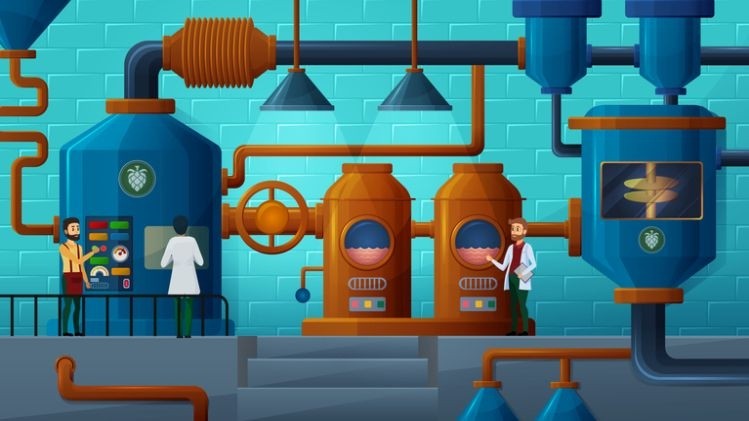GUEST ARTICLE: Microbes all dressed up... with no place to go?

The reality, however, has novel microbes ready to produce the products that make everyday life better, but lack the manufacturing capacity at meaningful scale to bring the dream to reality.
Quite simply, our microbes are all dressed up, with no place to go.
Let’s explore how we got here and how to change the path the industry is on.
Fighting the last war
Biotechnology is viewed by many investors as similar to the nascent computer industry, with organism companies considered the software and precision fermentation facilities the hardware.
Tech lore fondly recalls the low capital software ventures the industry invested in years ago, versus the capital intensive computer hardware space, and many view the biotechnology industry with this perspective.
While a great historic lesson learned, its applicability to industrial biotechnology and what is required for success is unclear. Quite simply, industrial biotechnology has orders of magnitudes more organisms (software) being developed than can be supported by the existing precision fermentation capacity (computers), yet funding continues to flow, without adding the requisite manufacturing capacity.
In a sad and ironic twist, more available precision fermentation capacity was taken offline last year than added. This trend needs to change, or industrial biotechnology will miss its chance to feed the world.
Precision fermentation landscape
The key attributes of the network of precision fermentation facilities that exists today are age and purpose, originally built for pharmaceuticals and biofuels, with an average age of 35 years.
While the teams that own and operate these facilities are doing amazing work, it is the equivalent of trying to run a piece of modern software on a 10 year old computer (think Minecraft on a Compaq desktop). If the computer can run the software, it will not be in a manner that is equivalent to the software on a modern machine.
In precision fermentation, this manifests itself in efficiency of production and scale of operation, which drives the competitive landscape. The industry can make the novel products being targeted, but not at the price point and speed required to meet market demand and return a profit to shareholders. Profitability is a key area that needs to be addressed for the novel food ventures to fulfill its promise.
Size matters
The key limiting factor in precision fermentation today is scale. The limited number of facilities that do exist are not of a size or process configuration to efficiently make the targeted novel food products.
This legacy is derived from being designed for another purpose, not a fit-for-purpose process designed for precision fermentation products.
In the case of former pharmaceutical facilities converted for industrial biotechnology, the higher unit prices of pharmaceuticals supported a smaller equipment scale and higher staffing level than fits the cost structure for novel foods. These sites will continue to serve a vital place in early-stage scale-up and process demonstration, but unless augmented with modern, large-scale, built-for-purpose facilities, industrial biotechnology will not reach the economic viability that provides affordable and long-term adoption of products.
The financing faceoff
The current shortage of manufacturing capacity is certainly not from a lack of interest in the precision fermentation space. There have been numerous proposed precision fermentation facilities over the last decade to install precision fermentation capacity that never achieved reality and most shared the same profile.
They were universally lauded as a great idea to build a contract precision fermentation facility, bolstered by the confidence that the biotechnology industry has a critical lack of capacity, especially in the US. This agreement was widespread and uniform, up to the point of getting capital, where the wheels have come off.
When the project is pitched to the venture capital space that plows billions of dollars into the organism end of the industry, the feedback is consistently that it is not a match with expected returns. As the focus shifts to the debt markets, the first-of-a-kind nature, combined with limited long-term offtake contracts makes it a poor fit with traditional project debt financing, with the banks saying, “this looks more like a venture project than debt.”
This financing faceoff continues to keep the industry in limbo and the necessary projects from moving forward. It is great to hear all the chatter about government funding or philanthropic participation to kickstart the industry, but unfortunately to date, it has been limited to talk for large-scale precision fermentation. Something material needs to change in how precision fermentation investments are viewed for the industry to succeed.
What is the solution?
The core of the solution is the realization that capital spent on precision fermentation capacity is a necessary extension of organism development and the only path to bringing the forecasted revenues and cashflow to reality.
Quite simply, we cannot make products without manufacturing capacity. The industry is developing world-class software, but lacks the fit for purpose hardware. The ability of advanced biotechnology to feed the world and reach its destiny, will remain in limbo until we provide the microbes a place to go.
Mark Warner is a registered professional chemical engineer with 35 years of experience in process commercialization, focused on commercializing first-of-a-kind biotechnologies, from bench-top to commercial operation. He is the founder of Warner Advisors and author of Biotechnology Commercialization Handbook – How to make protein without animals and fuels and chemicals without crude oil

















